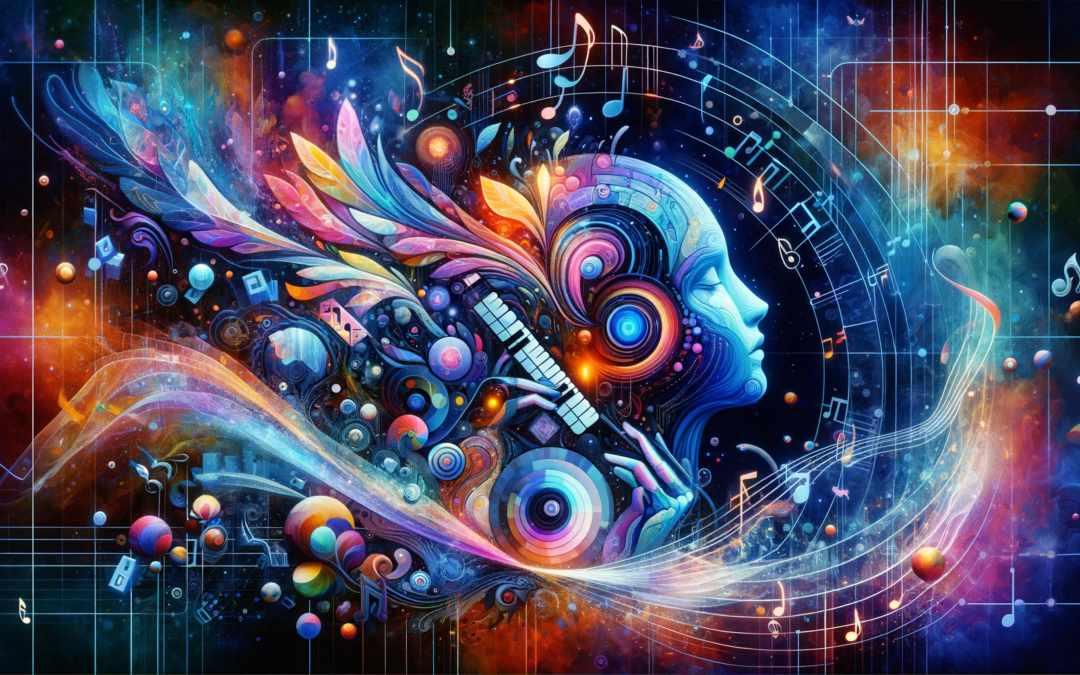Welcome to the exciting world where algorithms meet art! In this blog post, we’ll explore the impact of AI on the creative arts, specifically in the realms of music, visual arts, and literature. Prepare to be amazed as we delve into how AI technologies are not only assisting artists in creating new forms of art but also challenging traditional concepts of creativity and authorship.
Introduction
Imagine a world where machines collaborate with humans to create masterpieces. The integration of technology into the creative arts has opened up a whole new realm of possibilities. Enter AI, a new collaborator in the creative process. This post aims to shed light on how AI is transforming the art world.
AI in Music Composition and Production
Music has always been a powerful form of expression, but with AI, it’s reaching new heights. AI algorithms are now composing music, generating new sounds, and even collaborating with musicians to create innovative compositions. Take the example of “Amper Music,” an AI-driven music composition platform that allows users to create custom-made music for their projects. The possibilities are endless!
AI in Visual Arts and Design
The fusion of AI and visual arts has given birth to mesmerizing creations. AI is not only creating digital art but also assisting in design processes and interactive art installations. One notable example is “The Next Rembrandt,” where AI analyzed the artist’s style and created a new painting in his signature style. It’s like having a digital apprentice that can mimic the great masters!
AI in Literature and Writing
AI is not just limited to the realms of music and visual arts; it’s also making its mark in literature. AI tools are now generating creative writing, aiding in narrative development, and even crafting poetry. Although some may question the authenticity of AI-generated literature, it undeniably expands the boundaries of literary creativity. Who knows, the next great novel might be penned by an algorithm!
Challenges and Ethical Considerations
While the integration of AI in the creative arts is exciting, it also raises important questions. Issues of originality, copyright, and the role of the human artist come to the forefront. Can AI truly be considered an artist? These ethical considerations are crucial as we navigate this new era of art and technology.
AI as a Tool for Exploration and Experimentation
AI is not here to replace artists; it’s here to push the boundaries of traditional techniques and styles. Artists are using AI as a tool for exploration and experimentation, leading to groundbreaking artistic innovations. From generative art to interactive installations, AI is revolutionizing the way we perceive and experience art.
The Future of AI in the Creative Arts
What does the future hold for AI in the creative arts? The possibilities are both exciting and uncertain. As AI continues to advance, it will undoubtedly further transform the creative arts. Will we witness a time when AI becomes the primary creator? How will this impact artistic expression and cultural production? These questions ignite our imagination and provoke thought about the future of art.
Engaging with the Audience
We want to hear from you! Have you encountered AI-driven art or creative projects? Share your thoughts and experiences in the comments below. Let’s discuss the potential benefits and challenges of integrating AI into the creative arts. After all, art is a reflection of our humanity, and it’s essential to strike a balance between innovation and preserving the human essence in art.
Conclusion
AI is revolutionizing the creative arts, pushing the boundaries of what is possible. From AI-generated music to AI-assisted literature, the impact is undeniable. Let’s embrace AI as a collaborator and explore the endless possibilities it brings. As we move forward, let’s ensure that we maintain the human touch and navigate the ethical considerations that arise. The future of art is here, and it’s a beautiful collaboration between humans and machines.
So, buckle up and get ready to witness the fascinating world of artistic algorithms!
Images: Include images or graphics showcasing AI applications in the creative arts, such as AI-composed music, AI-generated artwork, and AI-assisted writing. Use infographics to illustrate the impact of AI on expanding the horizons of creativity and artistic expression.
SEO Elements: Integrate keywords like “AI in the creative arts,” “AI in music and art,” “AI-driven artistic innovation.” Create a compelling meta description that encapsulates the post’s focus on AI’s influence on the creative arts.
Get ready to be inspired and amazed as we explore the fascinating intersection of AI and the creative arts!










